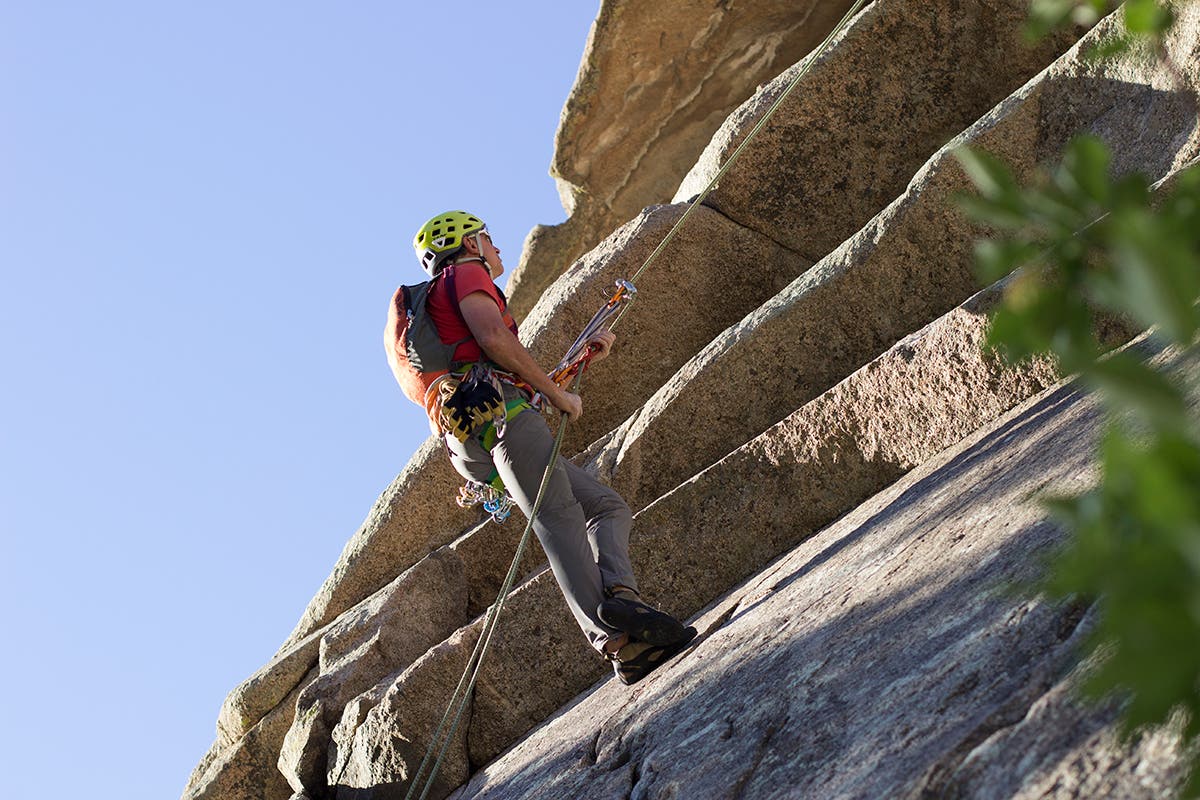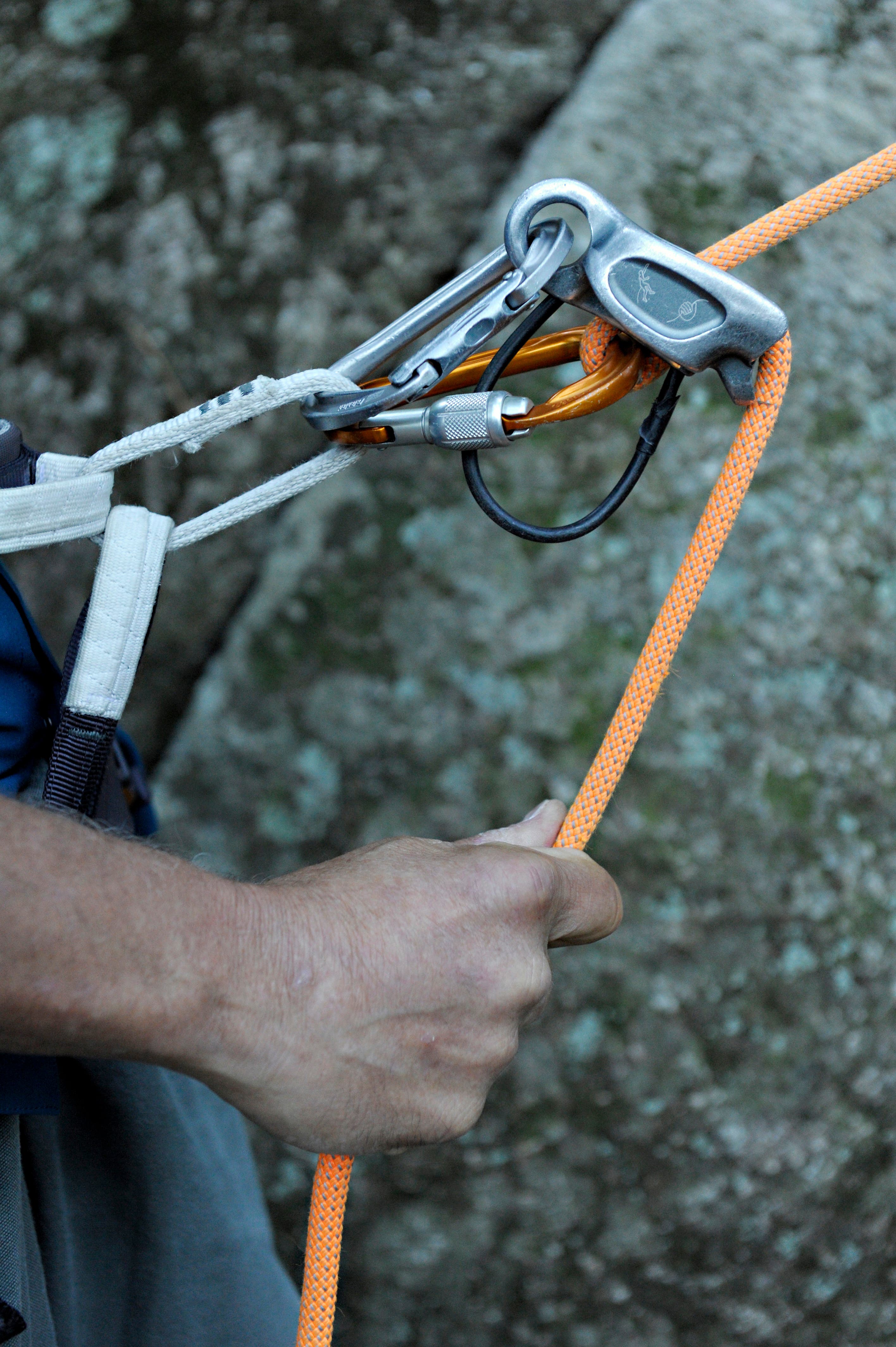A Simple Way to Add Friction to a Rappel

"Jonathan Trites" (Photo: Jonathan Trites)

Rappelling down a single strand of rope—or even two strands of a skinny rope, especially a slippery, new one—can be scary. It can also be potentially dangerous: If the rope is sliding through your device too quickly, you can end up losing control of your descent.
One way to solve this issue is to wear gloves: Since pain affects how hard we grip, removing that barrier can better our control and thus increase friction during the rappel. Another solution is to increase friction, and requires only a guide-style belay device.
A Quick Fix.

With your guide-mode device, thread your rope as you normally would for a rappel. Then, clip a carabiner through the “guide” hole in the device and clip it back to the same place your rappel carabiner is attached—depending on how your rappel is set up, either your belay loop or your extension. This technique torques your device back a bit and it gives you a lot more friction, thus offering greater control for steep rappels and/or skinny ropes.
The one caveat is that using this method should not affect your decision to use a back-up. It’s a way to increase friction, but it won’t back you up like a prusik hitch, etc., would.
To learn more about how to climb trad safely and efficiently, take my online course, Intro to Trad Climbing.